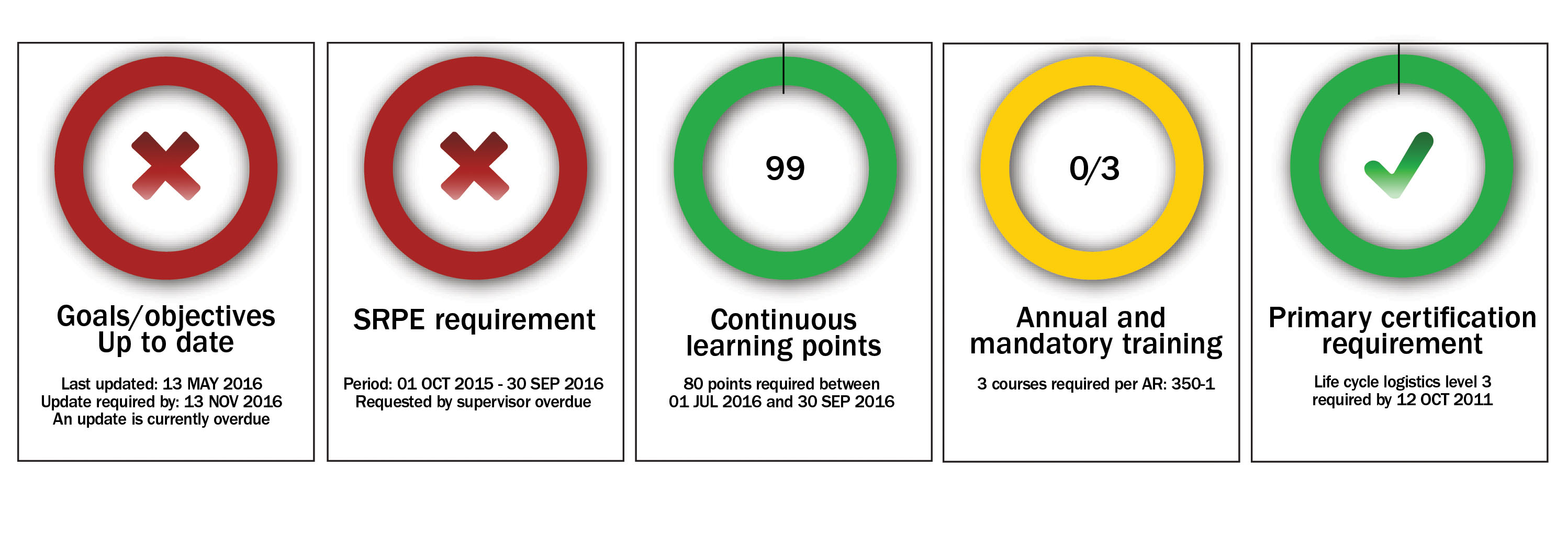
This career basic helps acquisition workforce members keep track of what they need to do and when.
By Mr. Robert E. Coultas
Jobs in defense acquisition are unlike most others because of the legally mandated training, education and other requirements that employees must fulfill. The central tool for planning and tracking those requirements and compliance with them is the Individual Development Plan (IDP).
Fortunately, there’s an app for that, and it’s accessible through the Career Acquisition Personnel and Position Management Information System (CAPPMIS) portal at https://apps.asc.army.mil/camp/. (A Common Access Card is needed to log in.)
Acquisition workforce members are required to create and maintain a five-year IDP. While that sounds a little onerous, the good news is that it’s not difficult. In fact, based on the individual’s initial assignment in the acquisition workforce, as entered into the Defense Civilian Personnel Data System (DCPDS) by their human resources point of contact, the IDP pretty much creates itself.
DCPDS data are available to CAPPMIS within three or four weeks of hire. When the employee logs in, CAPPMIS uses the particulars of the individual’s position and their credentials from DCPDS to create a basic IDP, including all of the courses required for certification under the Defense Acquisition Workforce Improvement Act (DAWIA). It’s then up to the individual to customize and add other courses and objectives. For example, the course starting dates are recommended from information initially entered in the employee’s file, but the individual can change these dates to fit their schedule.
The IDP is designed in part to help maintain meaningful communication between the employee and supervisor about the employee’s career. Its main purpose, however, is to help the employee understand, track and accomplish what’s expected of them to keep current in their certifications. The IDP remains a living document throughout the acquisition professional’s career.
SUPERVISOR INPUT IS KEY
Stephanie Watson, acquisition career manager at the U.S. Army Acquisition Support Center, described how the IDP supports the supervisor-employee connection.
“Once an IDP is created, the individual must submit requests on almost everything through their supervisor,” Watson said. “For example, all online and resident courses—with the exception of continuous learning modules—as well as objectives and education must be added to the IDP, then submitted to the supervisor for review and approval. This facilitates the discussion between the employee and supervisor on where the employee wants to go [with their career] and where they see themselves in three to five years.”
Watson noted that the system has additional capabilities. For example, the U.S. Army Director for Acquisition Career Management (DACM) Office monitors IDPs, which helps the DACM Office carry out its responsibility for ensuring acquisition career development, talent management initiatives and certification of the Army Acquisition Workforce.
“It helps us get quotas for seats in DAU [Defense Acquisition University] courses,” she said. “When they [employees] sign up for training in their IDP, we find out how many other members need the same training for their certification. We petition the DAU for Army quotas. If we have more people needing the training, we may get more seats, which means we can get more people certified quicker.”

GREEN MEANS GO
The most recent update to the IDP site on CAPPMIS incorporates a dashboard that uses red, yellow and green indicators to represent compliance with workforce standards. As new standards are identified, the dashboard adjusts to reflect progress toward those requirements. (Image by U.S. Army Acquisition Support Center)
IDP UPGRADE ROLLED OUT
A January update to the IDP system (version 3.9) promises workforce members and their supervisors an easier way to keep track of requirements and report core training and certification status. This includes email notifications to both parties when the items related to the employee’s DAWIA compliance are coming due or are past due.
A new dashboard feature uses a “stoplight” color scheme to signal where the employee stands vis-a-vis continuous learning points, primary certification requirements, annual mandatory training, the status of goals and objectives and the Senior Rater Potential Evaluation requirement. As the employee’s acquisition career progresses and they meet requirements, the dashboard updates accordingly.
CONCLUSION
The IDP provides acquisition professionals a means to keep their career on target, but it is by no means an “autopilot” tool. Ultimately, it’s up to the individual to remain certified and qualified in their current position. Consistently maintaining the IDP plays a necessary and useful role in fulfilling the obligations of acquisition professionals.
For more information, go to https://asc.army.mil/web/dacm-office/.
This article is scheduled to be published in the July – September issue Army AL&T magazine.
Subscribe to Army AL&T News, the premier online news source for the Acquisition, Logistics, and Technology (AL&T) Workforce.







